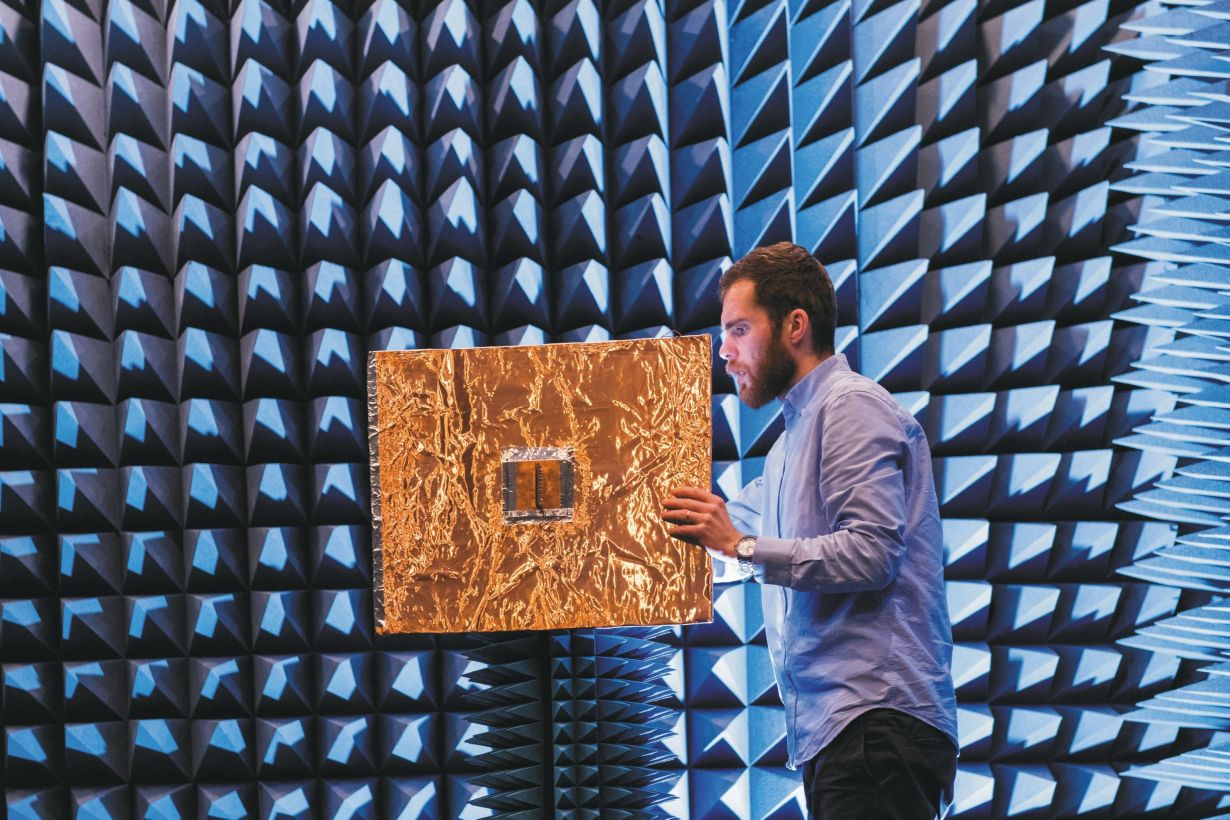Mobile communications, satellite navigation, WLAN, door opener – modern cars use a variety of wireless services. The antennas for transmitting and receiving data mostly are integrated in the “shark fin” on the roof. However, the number of mobile communication systems and the data volumes to be managed increase constantly and even more complex antenna systems are required. Space in the small modules on the roof is getting scarcer. Future autonomous operation of cars in road traffic will even aggravate this problem. Engineers of Karlsruhe Institute of Technology (KIT) have now designed a reconfigurable antenna system that reliably manages large data volumes of various services at the same time. It is presented in the journal Progress in Electromagnetics Research.
“Whoever wishes to transmit large amounts of data of many users at the same time without any errors, has to manage a variety of challenges depending on the environment,” Thomas Zwick, Head of KIT’s Institute of High-frequency Technology and Electronics (IHE), says. An example is mobile communication: Phone calls at highly
populated places, such as Frankfurt airport, may be associated with capacity problems. “Here, many people want to communicate at the same time.” People making phone calls in the Alps, however, often have no network access. “Here, coverage is important.”
As data services of cars frequently are safety-relevant, they have to work reliably anywhere. According to Zwick, the radiation pattern is of decisive importance. Today, car antennas are used, whose electromagnetic field spreads evenly to all sides. “At first glance, this appears to be the right choice, as signals from all angular directions can be received while the car moves,” Jerzy Kowalewski of IHE says. The problem: In urban areas, for instance, signals might be deflected by house walls. The consequence: Incomplete transmission up to complete data loss. In addition, capacity and coverage problems occur. This problem is to be solved by the MIMO (Multiple Input Multiple Output) technology that is part of the new LTE mobile communication standard. However, several antennas with transmitters and receivers will be needed. The systems will become more complex, bigger, and more expensive.
At IHE, researchers tested reconfigurable antenna systems to minimize the number of transmitters and receivers required. Their electromagnetic fields are not static, but can vary their radiation patterns. Like a fisherman, who casts his net alternately – or better, who casts two or more nets at the same time – in various directions and catches more fish in this way. “By switches, certain antenna parts can be switched on or off alternately. As a result, directional characteristics of the transmitters and receivers are changed,” Kowalewski says. “Parallel transmission of data via different propagation paths increases the capacity of the system and the data rate.”
Kowalewski’s system needs less transmitters and receivers. This does not only reduce costs, but also the need of space. Together with researchers of TU Wien, KIT scientists also studied whether their antennas can be lowered into the car roof to save space and to improve aerodynamics. Antenna cavities integrated in the car body may have a volume that exceeds that of conventional shark fin housings by a factor of ten and can be hidden below the roof line. These results were presented at the International Workshop on Antenna Technology.
In close partnership with society, KIT develops solutions for urgent challenges – from climate change, energy transition and sustainable use of natural resources to artificial intelligence, sovereignty and an aging population. As The University in the Helmholtz Association, KIT unites scientific excellence from insight to application-driven research under one roof – and is thus in a unique position to drive this transformation. As a University of Excellence, KIT offers its more than 10,000 employees and 22,800 students outstanding opportunities to shape a sustainable and resilient future. KIT – Science for Impact.

